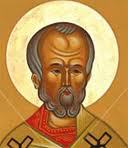Three Voices on the Historical Jesus – No. 3: 1 Clement (with Addendum on the Epistle of Barnabas)

- Issue of the authenticity of 1 Clement
- Does 1 Clement know any Gospels?
- Christ speaking out of scripture
- Clement knows of the Passion through Isaiah 53
- Christ’s sacrificial ‘blood’ and ‘flesh’ belong in the mythical dimension
- Prophecy in scripture not fulfilled in history
- Epistle of Barnabas: still lacking a written Gospel
- Barnabas points to scripture as his source
- New Testament math: 0 + 0 = ?
- A progression from mythical to historical
Is 1 Clement in any way authentic?
Despite doubts going back to the Dutch Radicals of the late 19th century, Ehrman accepts the non-canonical epistle 1 Clement as authentic in regard to its ostensible purpose (a letter from the Christian community in Rome urging the settling of a dispute going on in the community in Corinth) and its traditional dating (the last decade of the first century), though its attribution to a Clement reputed to be the fourth bishop of Rome remains highly dubious.
With all of that I would agree, and have defended this degree of authenticity against a continuing radical view that the work is a much later forgery designed to encourage other Christian communities to acknowledge the hegemony of the Church of Rome. This issue need not be addressed here, except to say that I find the arguments for such a view quite unconvincing and unnecessary. (See the reasons given in Jesus: Neither God Nor Man, note 169.) However, I will hereafter refer to the author as “Clement.”
Does 1 Clement know any written Gospels?
Some of those reasons will be evident in the present discussion. Ehrman makes the following admissions for 1 Clement:
The letter quotes extensively from the Greek Old Testament, and its author explicitly refers to Paul’s first letter to the Corinthians. But he does not mention the Gospels of the New Testament, and even though he quotes some of the sayings of Jesus, he does not indicate that they come from written texts. In fact, his quotations do not line up in their wording with any of the sayings of Jesus found in our surviving Gospels. (p. 104, DJE?)
If we agree on a reasonable dating of the 90s of the first century, or even the first decade of the second, we find here a similar situation to that of the Ignatian letters. At this period, even in Rome, there is no sign of actual written Gospels available in major Christian communities. When we see the same situation existing for Papias even later, we know that there is something wrong with the traditional view of the Gospels as historical documents all written before the first century was completed.
What does Clement know about a life of Jesus on earth?
Despite this situation, Ehrman argues that “the author of 1 Clement, like Ignatius and then Papias, not only assumes that Jesus lived but that much of his life was well known.” The latter two writers may indeed have made such an assumption, but there is little sign that either one of them knew very much about their assumed Jesus’ life or teachings. As for 1 Clement, both of Ehrman’s claims are suspect. Here is what he offers as evidence that the author is speaking “about the historical Jesus” (I’ve altered Ehrman’s order for better efficiency in addressing them):
(1) Christ spoke words to be heeded (1 Clement 2.1).
This is first of all a misleading translation. Literally, it is “you paid attention to his words,” which eliminates the image of Christ standing before one and speaking. In any event, considering that spiritual figures such as Wisdom and the Holy Spirit are often presented as conferring advice and guidance, this statement in any form could easily apply to a spiritual figure. Continue reading “13. Earl Doherty’s Response to Bart Ehrman’s Case Against Mythicism – Pt.13”





